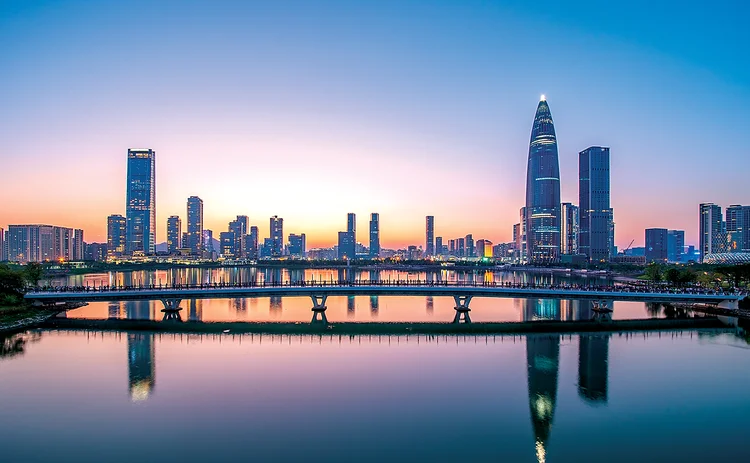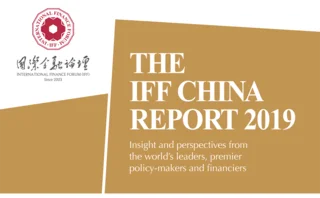
On the heels of the big three


In 2002, I advised Tung Chee-hwa, Hong Kong’s first chief executive, on two construction projects: a bridge stretching from Hong Kong to Zhuhai and Macao, and a high-speed railway between Hong Kong and Guangzhou that would reduce journey times to under an hour. My proposals were approved and incorporated into his municipal report. In September 2017, the high-speed rail link was completed and, in October, the Hong Kong–Zhuhai–Macao Bridge was opened.
The New York, San Francisco and Tokyo bay areas have evolved into powerful regions of economic development, generating around 60% of global GDP. The Guangdong–Hong Kong–Macao Greater Bay Area has the potential to be just as successful.

The Greater Bay Area comprises nine Cantonese cities and two special administrative regions, which complement each other neatly. Guangzhou is the leading political, economic, education and cultural centre in south China, with a world-leading manufacturing sector and the largest factory in the world. Shenzhen is one of the most innovative and dynamic cities in China, home to Tencent and other high-tech companies. Macao has one of the world’s best entertainment and conference industries and, thanks to the ‘one country, two systems’ policy, Hong Kong continues to benefit from a favourable tax regime. The corporate tax rate in Hong Kong is 16.5%, while the tax rate for small and medium-sized enterprises has recently been reduced to 10%. Average personal income tax is 15%, while overseas income is not taxed, and there is no asset value-added tax or estate tax.
China has incorporated the development of the Greater Bay Area into its national strategy. President Xi Jinping has attached great importance to promoting economic development, suggesting the strategy does not just concern the development of the Greater Bay Area, but should encourage the whole of China to improve its economic standing in the future.
In August 2018, discussions took place at first vice-premier of the State Council Han Zheng’s co-ordination group meeting. Here it was stressed the Bay Area Development should not obstruct or interfere with the implementation of the one country, two systems policy. To strengthen Hong Kong’s position as a centre of international technology innovation, the central government is proposing setting up a research division of the Chinese Academy of Social Sciences. For the first time, Hong Kong’s potential in the field of innovation is highlighted, and strengthening its infrastructure will help create an ‘innovation corridor’ running between Guangzhou, Shenzhen, Hong Kong and Macao under the leadership of the Politburo Standing Committee of the Communist Party of China, a national level co-ordination mechanism for the Bay Area Development.
A focus on development
Talent
Sourcing and retaining talent is the biggest challenge for any modern economy. Success in competition between large economies is contingent on the talent pool, the people driving the innovation. Both New York and San Francisco have a higher proportion of international talent: almost 40% of people working in these regions are from overseas. The proportion of international talent in the Greater Bay Area is relatively low, accounting for less than 5%. Interactions with Hong Kong – one of the world’s largest international financial centres – should widen the talent pool and provide another advantage to development. Hong Kong has a population of only 7 million people, and market demand is small. The region measures a mere 1,000 square kilometres and is mostly mountainous, with only one-third of its land habitable. But the Chinese mainland has both undeveloped markets and geographic space; Guangzhou’s Nansha District, for example, covers 800 square kilometres, almost 80% of the area of Hong Kong. The two areas could complement each other well.
The Greater Bay Area in numbers
- Covers an area of 56,000 square kilometres, around 1.5 times the size of Tokyo’s bay area and three times the size of New York’s bay area.
- Has a population of about 70 million, equal to the existing three bay economic zones.
- GDP currently stands at US$1.4 trillion, a little behind that of the other three bay areas. However, GDP growth is accelerating and the region is expected to catch up with Tokyo soon.
- Receives 65 million containers a year, far more than the other three bay areas.
But mainland China can also benefit from resources in Hong Kong. Currently, it is beginning to feel the effects of an ageing population. In 2017, 17% of China’s citizens were over the age of 60. As life expectancy increases and incomes continue to rise, people will require improved medical care. Mainland China has 1.7 doctors and 2.6 nurses per 1,000 people; in Hong Kong, this figure is 2.6 doctors and 6.9 nurses. In drawing closer to Hong Kong and building up training and management opportunities in the Greater Bay Area, China can attract talent from Hong Kong to settle on the mainland.
However, living conditions will need to be improved if China is to sustain international talent. In terms of culture and lifestyle, Hong Kong is one of the three most attractive financial centres in the world, and has four universities ranked among the top 100. Those universities could set up branches in the Greater Bay Area or co-operate with universities already established in the region to enhance academic strength and promote intelligence exchanges.
Finance
Hong Kong is already a global financial centre, while Shenzhen and Guangzhou are still developing their financial districts. China is now highly leveraged, and attracting investment is therefore crucial for the Bay Area Development. A focus on attracting venture capitalists and private equity is important; using Hong Kong’s stock markets on which enterprise can list will help with the flow of direct finance.
Science and technology
Shenzhen is relatively advanced in the development of science and technology, yet falls short in biotechnology, which will be an important sector for promotion of human development. The US currently leads the way in this field, with Boston and San Francisco forming hubs for research and development. In April 2018, I suggested to the governor of Guangdong, Ma Xingrui, that Nansha or the Shenzhen–Hong Kong River Area – the Sham Chun River – should become China’s biotechnology base. Academics, scientists, doctors and patients would be able to work in the region under the same regulatory rules as those in Hong Kong. At present, many medicines, animals and human tissue used in experiments are not accessible to mainland China, because of lengthy quarantine procedures that are in place, which means much of the research is conducted in Hong Kong.
By combining the strengths of its several cities and taking advantage of the existing political arrangement, the Greater Bay Area is well positioned to develop into a world-leading economic bay area.
Only users who have a paid subscription or are part of a corporate subscription are able to print or copy content.
To access these options, along with all other subscription benefits, please contact info@centralbanking.com or view our subscription options here: subscriptions.centralbanking.com/subscribe
You are currently unable to print this content. Please contact info@centralbanking.com to find out more.
You are currently unable to copy this content. Please contact info@centralbanking.com to find out more.
Copyright Infopro Digital Limited. All rights reserved.
As outlined in our terms and conditions, https://www.infopro-digital.com/terms-and-conditions/subscriptions/ (point 2.4), printing is limited to a single copy.
If you would like to purchase additional rights please email info@centralbanking.com test test test
Copyright Infopro Digital Limited. All rights reserved.
You may share this content using our article tools. As outlined in our terms and conditions, https://www.infopro-digital.com/terms-and-conditions/subscriptions/ (clause 2.4), an Authorised User may only make one copy of the materials for their own personal use. You must also comply with the restrictions in clause 2.5.
If you would like to purchase additional rights please email info@centralbanking.com test test test







